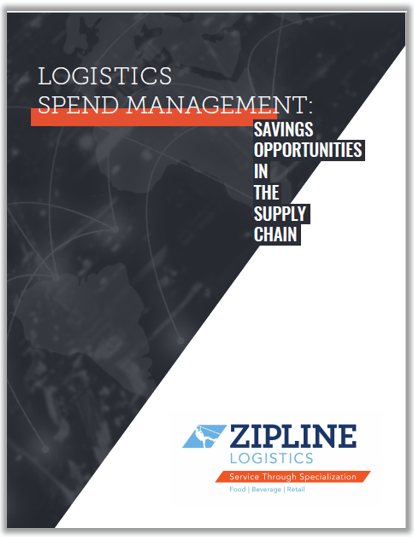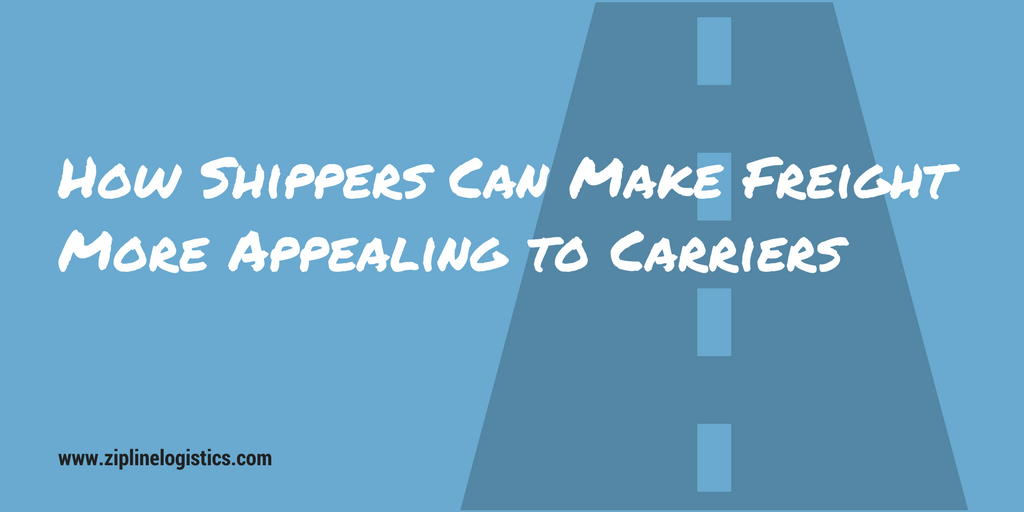Some freight lanes are more difficult than others when booking carriers. For example, an individual in charge of transportation might find it difficult to find a willing driver. Multiple phone calls and vetting could still result in no pickup or delivery. Even if a driver is secured, it could be at a very high cost or with an undesirable timeline. Emerging brands and smaller shippers can be profoundly impacted by these “tough lanes.”
Why Can’t I Move My Product?
Here are specific reasons why shippers might have difficulty booking a pickup or delivery:
Location: Certain regions or smaller towns tend to have undesirable truck-to-load ratios. If a driver is going to pick up from an area where there are little to no other production or distribution facilities, he or she may have a difficult time finding freight to haul back to their home base. This means they must travel empty miles and lose out on opportunities to earn income. Unless they can find a backhaul, they may choose to decline a load altogether or to charge a premium.
Shipper Reputation: If a shipper is undesirable to work with, carriers will often choose other available loads. A bad reputation could be the result of numerous things:
- Poor receiving hours – very early morning or late at night
- Long dwell times – freight not ready for pickup, congested docks
- Slow or disorganized loading and unloading
- Not enough staff, equipment, or space (docks) for unloading
- Disrespectful or unhelpful staff
- Unclean or minimal driver amenities – break areas, bathrooms, etc.
- Lack of sufficient parking space
- Poor facility configuration – difficult to maneuver equipment
Consignee Reputation: If a receiver is notorious for making drivers wait long periods of time for pickups, or repeatedly rejects orders, a driver may not want to take freight to the location. If rejected from a receiver, a carrier will have to take product to a rework facility, or back to the original location. This causes a ripple effect of inefficiencies, time lost, and extra charges.
Distance: If a load requires an undesirable distance it can be hard to find a truck. Yet, what qualifies as an ideal load distance depends on individual carrier preferences, which can be illusive to a new shipper. Some drivers prefer to take loads less than 500 miles so they can return to their home base within 24-48 hours, while others won’t take freight unless it’s further than 500 miles so they can earn more money on the load.
This issue will become even more influential as the ELD mandate goes into effect and vehicle or fleet efficiency is dictated by available hours-of-service.
Load Requirements: Some freight requires extra paperwork, equipment, protocols, or handling. Unfortunately, some drivers aren’t willing to take on those responsibilities. This makes available capacity tight.
Seasonality: Seasonal freight, such as Christmas trees and produce, can also make shipments from certain regions harder to cover during certain times of the year. In greatly simplified terms, it is typically cheaper to go into Florida throughout produce season because backhauls are plentiful, but it’s more expensive to get out of Florida due to tightened capacity. Similarly, for Christmas trees, rates can sky rocket from late October into January if going out of Washington or Oregon.
How to Make Shipments More Attractive – Shipper of Choice
Fortunately, there are numerous steps a shipper can take to overcome these hurdles and make orders more appealing.
Network Reconfiguration: This could encompass an office relocation or closing, but more likely the strategic placement of new production facilities, warehouses, or co-packers. Wherever a product goes in and out of, location needs to be carefully considered.
Shipment Optimization: There are ample opportunities to optimize shipment distance, routing, and timing to make them more appealing to carriers. Here are examples:
- Establishing ideal distances between facilities to ease shipment strains
- Helping drivers avoid congested roadways and high-traffic times
- Avoiding rush-orders or weekend shipments
Facility Improvements: Becoming a desired location for drivers to go in and out of – or a preferred shipper or shipper of choice – takes effort. Drivers are more likely to accept a load if they know the facility they’re going into treats them with respect, values their time and service, provides amenities, is staffed efficiently, and is easy to work with.
Order Configuration: Paying extreme attention to retailer-specific requirements can help prevent rejections. Training staff on these protocols and over-communicating necessities can help ensure your warehouse and packaging teams don’t load a wrongly configured order or use the wrong equipment. This ultimately prevents hassles and charges being passed on to carriers.
Process Improvements: In addition to improving location, routes and facilities, it’s important to make it easy for drivers to receive information, communicate with staff, obtain necessary paperwork, and get paid. Administrative improvements can be just as influential as facility, routing, or shipment changes.
Expanded Carrier Base: Building a network that includes numerous carriers with required equipment and knowledge is essential. This makes it easier to find qualified and willing drivers, particularly when an unscheduled or rush order pops up.
Backhaul Connections: Helping a driver connect with nearby freight opportunities goes a long way. Reducing deadhead miles are a major concern for drivers. Helping them overcome this hurdle builds relationships and makes loads more desirable.
How a 3PL Can Help Improve Freight Appeal
Working with a third-party logistics (3PL) can help propel these solutions further, faster. A strong 3PL partner can help solve issues with tough freight lanes in the following ways:
Technology: Advanced 3PLs will have the technology available and data experts on staff who can help run robust network analyses. They can make the optimization of locations and routes feasible for any size company. This can be particularly valuable to a rapidly growing CPG brand or one planning to scale.
Carrier Network: A non-asset based 3PL will have a diversified and qualified carrier base. This means they have access to numerous drivers who will be willing to take on any distance or specialty requirement. You can save an extreme amount of time by calling a 3PL instead of calling on multiple carriers.
Potential Backhauls: Working with hundreds of drivers from numerous regions, 3PLs can fill backhaul loads far easier than an individual shipper can. For this reason, working with a broker can help you make undesirable loads more appealing.
Leverage: 3PLs have more negotiation power with carriers than individual shippers do. Often working with drivers for multiple orders, 3PLs can offer incentives or balance a less desirable lane with a more appealing one.
Facility Knowledge: A 3PL often goes in and out of the same receiver locations for multiple clients, so they can share information about preferences and best practices. This includes guidelines about order configuration, pick-up and delivery windows, scheduling, equipment, etc. Understanding customer needs and communicating them to carriers can make a monumental difference in performance.
A tough freight lane can be made more appealing to carriers through a handful of different supply chain shifts or operational improvements. Shippers have multiple options, from simple to complex, available to them if they want to make freight more desirable to truckers while simultaneously cutting transportation costs.
Sign Up for Zipline Logistics’ E-newsletter
 | Logistics Spend Management: Savings Opportunities in the Supply Chain Looking to reduce your transportation spend? Check out our eBook for advice on how to identify untapped logistics savings opportunities. |

